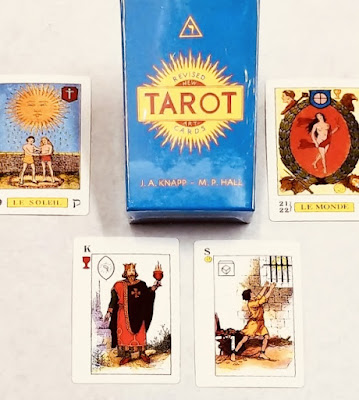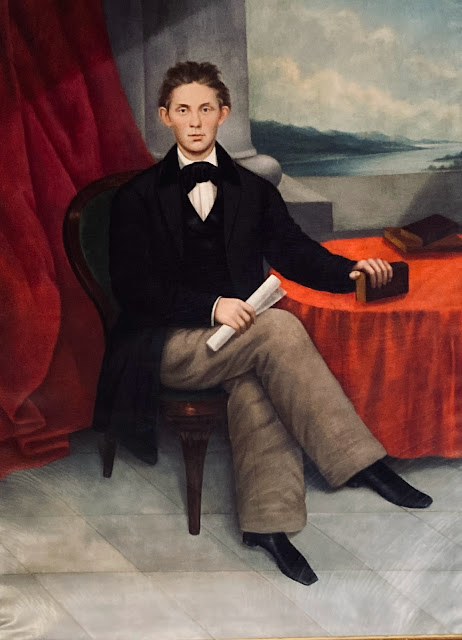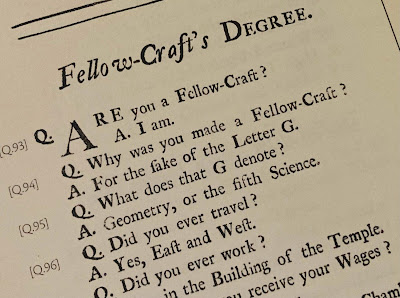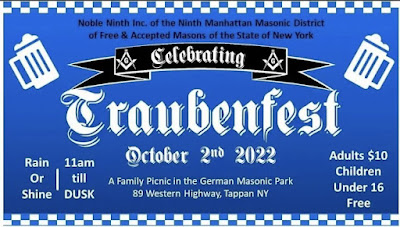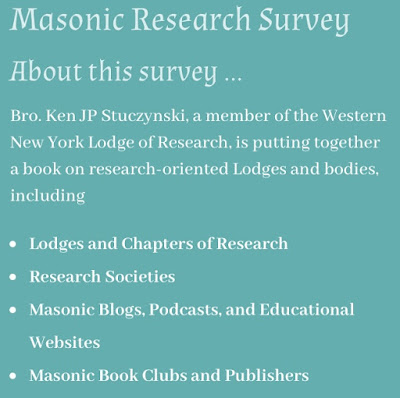The hundredth anniversary of the constitution of my lodge is a month away, so I am reading about that occasion and about the concurrent activities of Freemasonry in the State of New York. The latter is particularly impressive.
The Grand Lodge of New York obviously was a huge jurisdiction. Its lodges numbered 921 and had 272,634 Master Masons on the rolls in 1922-23. And it was a force internationally, having chartered lodges in Finland and Romania, with more planned in Hungary.
Europe’s wounds from the First World War were still being triaged, and the Grand Lodge became a leader in trying to establish an international federation of Masonic grand lodges to reconnect the fraternal bonds severed by the war. Ultimately, the Masonic International Association, the first of its kind in the Order’s history, did not come to fruition, but the Grand Lodge of New York was alone among the forty-nine U.S. jurisdictions to make the effort. Grand Master Arthur Tompkins, in his address to the Grand Lodge at the close of that term, said:
 |
| MW Arthur S. Tompkins |
The spirit of strife is abroad in the world. National hatred, racial hatred, class prejudices, religious hatred, and individual hatreds are the curse of humanity and a blight upon the civilization of the twentieth century, and the world needs the influences of religion and the precepts of the Great Light in Masonry and the practical application of the Doctrine of the Fatherhood of God and the brotherhood of man to cure its ills and heal its wounds and calm the passions and subdue the prejudices of men and classes of men and nations and to bring concord, peace, and happiness to all nations. These are the only forces that can reach and regenerate the hearts of men and transform their brutal, selfish, and intolerance instincts into the attributes of love and service and toleration, and we American nations should welcome every opportunity to extend our activities and influences throughout the world….
Why cannot Masonry cooperate throughout the world to help suffering humanity and save the civilization now in jeopardy?
American Freemasonry, with all its prosperity and strength, owes to the Masons of all the countries of the world its sympathy, cooperation, the influence of its ideals, the power of its example, and the benefits of its counsel and leadership. We American Masons should not confine our activities and benefactions to our own country and our own national problems. The Masons of Europe are looking to us for leadership, and I believe that a union of all the Masonic forces in the world will be a great power, a potential force, for the promotion of the spirit of fraternity and brotherhood, peace and goodwill and may materially aid in the moral reconstruction of the world.
It’s a grandiose message to the modern ear. Quite a shift in Masonry’s focus from how Tompkins expressed it then to today. Now it isn’t even “our own national problems” (if only), but is merely the fraternity’s organizational maladies. But a century ago was patriotic times. The Grand Lodge made Masonic holidays of Flag Day and George Washington’s Masonic birthday for the lodges to celebrate. MW Tompkins urged the lodges to support public education, calling it “the cornerstone and bulwark of our liberties, and the only sure guarantee of our stability and perpetuity as a republic.” (Talk about changing times!) And, of course, there was the recent establishment of the Soldiers’ and Sailors’ Memorial Hospital.
Outside the sacred retreat, Arthur Tompkins was a major figure in civic and political life. A party chairman, a holder of judgeships, a U.S. Congressman. During the years he served as deputy grand master and grand master of the Grand Lodge of New York, Arthur S. Tompkins also was a New York Supreme Court justice. From what I’ve read, Tompkins simply could have asked for his party’s gubernatorial nomination in 1926, but he did not, and he endorsed another judge. In the thirties, near the end of his life, Tompkins was an associate justice of the Appellate Division.
And, yes, he was related to Daniel D. Tompkins; theirs was a family that established roots in America in the 1640s.
On Americanism, he was an idealist. In that same speech to the Grand Lodge, he concluded:
I have heard it stated by overzealous Masons that our government is a Masonic government. If by that they mean that Masons had much to do with the early history of our Republic, its birth and growth, they are right, but if intended in the broader sense, they are wrong and such statements are only calculated to cause controversy and resentment. We hear people talk about a white man’s government, and a Protestant government. These statements are true only in the sense that there are more white people and more Protestants in our country than there are people of other colors and creeds. Our Government is not exclusively a white man’s government, or a Catholic, or a Protestant or a Jewish or a Gentile Government, in the sense that the liberties, privileges, opportunities, and all the good things of the American Republic are for one class alone or that one class or race or creed may dominate all others in respect of their liberties, rights and privileges, and never will be such a Government if the ideals and purposes of the patriot fathers, the founders of our Republic, are perpetuated. Ours is a great democracy, made up of all kinds and classes, from all nations and all tongues and creeds. It is a Government as Lincoln declared “of the people, by the people and for the people,” of and by and for all the people, Jew and Gentile, Protestant and Catholic, white and black, and we cannot set up class against class, labor against capital, Protestant against Catholic, Jew against Gentile, the white man against the black man, without impairing the stability and imperiling the perpetuity of our Republic. Our democracy cannot permanently endure unless all classes, creeds, and races are allowed to live and work and worship freely and peaceably under the equal protection of the law. Any movement that is calculated to fan and intensify the fires of religious bigotry or class antagonisms or race prejudices will be deprecated and deplored by men who love their country and who want to keep it noble and make its future greater. There are peaceful and lawful agencies for the punishment of crime, the protection of individual and property rights, the redress of wrong, the vindication of the right and the preservation of our institutions and all the things that we Masons hold dear. Let us then be true to our Masonic faith and by precept and example, by loyalty and steadfastness, strive to allay the bitterness, to close the breach, to heal the wounds that have been and are being caused by these unfortunate and unnecessary antagonisms. Let our aim and all our influence be for a universal brotherhood and a world-wide peace, that is the great mission of our fraternity.
 |
| Arthur Tompkins cocktail |
In my brief reading on Arthur Sydney Tompkins, I see how he was a serious cigar lover, and that the Rockland Tobacco Company of Nyack sold a cigar named Judge Tompkins Corona with the tagline “A Supreme Cigar Verdict.” I also stumbled across the existence of a cocktail named Arthur Tompkins. I haven’t yet found its history (nor have I pinned down his politics vis-à-vis Prohibition), so I can’t conclude it is named for our past grand master, but I’ll keep looking. The recipe is simple though:






































































